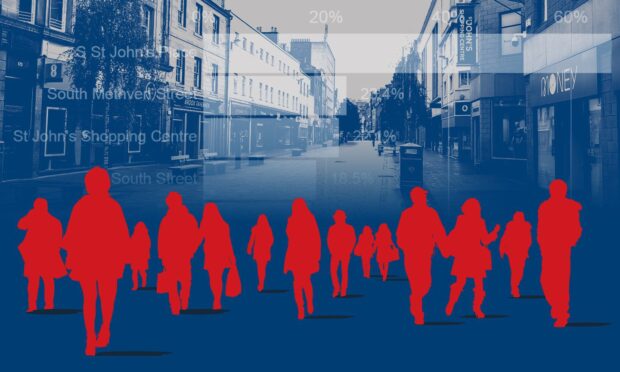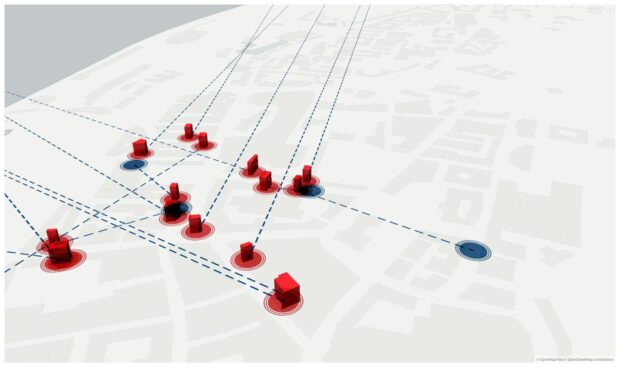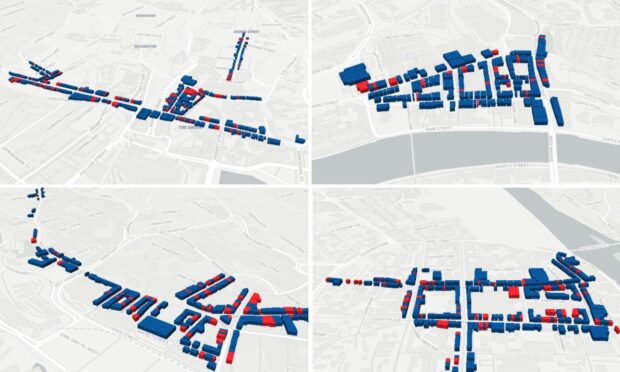
A leading voice on the psychology of domestic violence believes there is no single cause behind a young male perpetrator’s decision to abuse their partner in psychological and physical ways – but that their early years may play a crucial role in shaping how they respond to women.
Professor Liz Gilchrist, chairwoman of the Scottish Advisory Panel on Offender Rehabilitation and a member of the Scottish Centre for Crime and Justice Research, says many perpetrators have healthy or at least unproblematic attitudes towards gender roles.
“General attitudes under normal conditions don’t separate abusers from not (abusers),” she said.
“You don’t generally get men saying ‘all women should do this or that’ – but they do have beliefs about how they want their partner to behave.”
Professor Gilchrist has researched the psychology behind domestic abuse for decades, and says an individual’s ability to navigate situations such as domestic arguments is potentially crippled if they aren’t raised in nurturing environments.
Poor early development
She argues that a child who is nurtured to see the world as a positive place, and who learns to manage their temperament, set goals and discover interests on their own, will have greater resilience and empathy for others.
Those who aren’t may seek to control the world around them with coercive, or even “clingy” behaviours as a result of poor early development.
This may go some way to explaining why younger people are continuing to commit domestic offences despite changes in social attitudes over several generations.
She cites a case she worked on of a young man jailed for assaulting his ex-partner who had since begun a new relationship.
“In his view he thought his partner, because he hadn’t decided the relationship was finished, had made a fool of him and he had to break out of prison to go and express his views and reassert his authority.
“It’s not just about ownership, or all women should be at home with a pinny tied round their waist.
“It’s much more than whether or not I think a woman should be in the home – it can be a strong hostility to women…that they’re treated badly by women who can talk better than them and are more able to manage emotions and be in charge, while they are driven by their desire for sexual contact. It’s about who’s in charge of that sexual contact.”
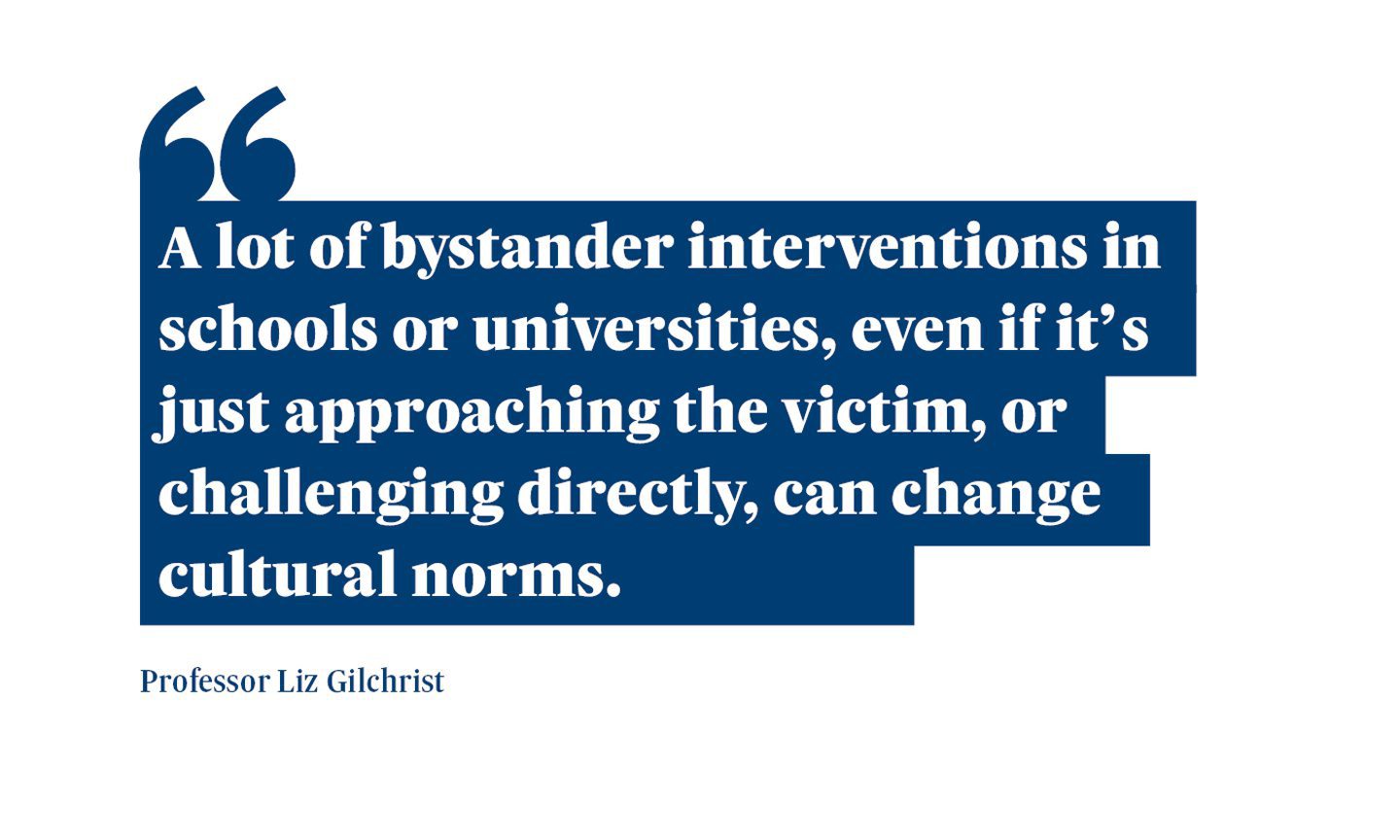
Professor Gilchrist is deeply involved in work to improve rehabilitation prospects for those who carry out intimate partner violence – and further believes many potential perpetrators could be nudged in the right direction early on with the support of their peers and what children are taught in schools.
The Intervention Initiative, originally developed by the University of the West of England in 2014, sees university students educated on how and when to intervene in situations that could indicate sexual harassment, coercion or an abusive relationship.
Some Scottish councils have introduced the Mentors for Violence Protection scheme, which also encourages pupils to intervene in situations of gendered violence.
“If you are a young boy or a teenager in school and see someone making a sexist comment to a girl or handling her or being abusive or checking her phone or something, it tends to be an all-or-nothing (reaction by bystanders),” Professor Gilchrist says.
“Not challenging that colludes with it and allows it to go on, so you grow up with believing it’s okay to demand that your girlfriend sends you a sex text or whatever.
“A lot of bystander interventions in schools or universities, even if it’s just approaching the victim, or challenging directly, can change cultural norms.”
Viewed through the lens of the criminal justice system, the majority of domestic abuse cases reported occur in areas of greater deprivation.
Analysis of official data on domestic abuse offences and the proportion of SIMD 1 zones in each council area – those considered among the 20% most deprived in Scotland – shows a strong correlation between offending and deprived populations.
However, Professor Gilchrist believes that statistics only tell part of the story, due to how different social classes handle intimate partner abuse.
“In a criminal justice population you will get younger men because they are policed more – and the types of offences they commit are more public offences.
“Middle-class victims have other resources like using the civil courts. They might have money to move and to seek private therapists.
“Additionally there’s more of a culture of violence in the working class. The middle classes are more manipulative – carrying out financial, economic abuses – which we weren’t really able to prosecute until recently.
“Obviously we have the new domestic abuse laws, which means we might see a change in the background of the people coming through the courts when we start prosecuting people for that on its own.”
One initiative she is involved in, the ADVANCE programme at Kings College London is researching the links between substance use and domestic abuse and how to support both victims and perpetrators.
Following successful trials in England it is being lined up for delivery across the UK, with adaptations for the Covid-19 pandemic.
“Early feasibility studies of the ADVANCE study are very promising,” the professor says.
“People find it very helpful to understand that the links between substance use and domestic abuse are not just about intoxicated physical violence but also about a range of links between drugs acquisition, withdrawal and substance use related lifestyle stressors and coercive, entitled or needy and controlling behaviour.
“It is not the drugs or alcohol that cause the abuse, nor is it lockdown. However the chronic presence of high alcohol use or use of drugs can make things far worse and, in the context of an abusive relationship, intoxication or withdrawal can predict when an incident might occur.”
Understanding the concept of domestic abuse
As a whole, Professor Gilchrist believes, we are getting better at prosecuting abusers of all kinds, not just those from working class backgrounds, and supporting survivors of abuse.
“Something the police used to say years ago was that your middle class perpetrator is better at presenting themselves as being a credible and hard-done-by, mutual victim of some couple conflict compared to your out-of-control young boy.
“If you look at some really significant convictions for intimate partner abuse there are some middle class men in there who are terrifying, really quite high risk individuals, but they probably wouldn’t have had multiple domestic abuse convictions because they weren’t ‘out of control’.
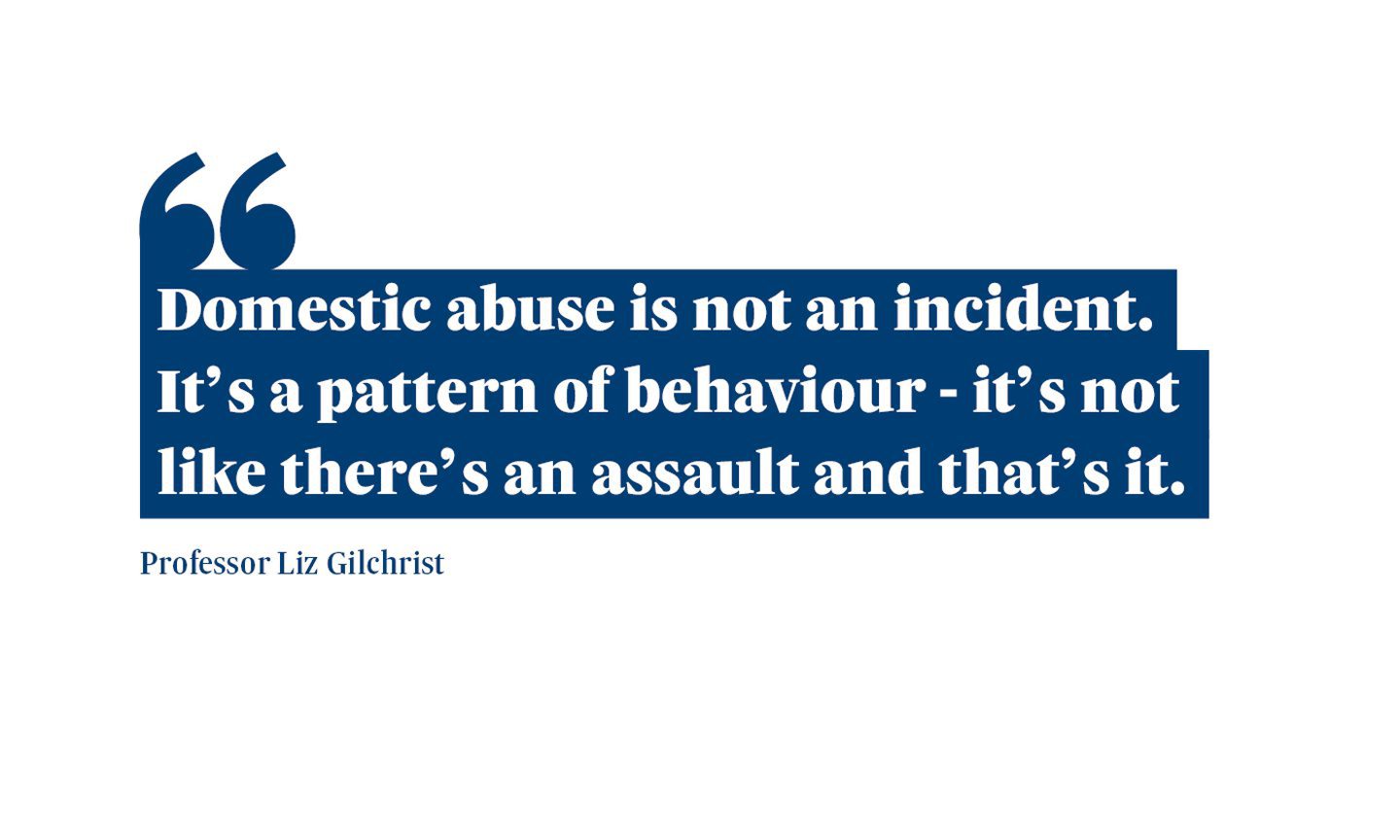
“They were so effective in terms of their manipulation and less obvious violence, like sexual violence or forced substance abuse, nothing as obvious as a smack or a broken bone or a bruise.
“There are markers that if people in relationships see their daughter in a relationship with someone changing their behaviour, being isolated from their family and friends, not being able to talk to men, seemingly to comply with their partner’s wishes, changing how they dress, dressing conservatively, any kind of notion of that, constant texting, checking, monitoring, being timed when you go to the shops, questioning…those are risk markers for lethality.”
Understanding the concept of domestic abuse as a continuous coercive course of conduct is key, she says, in order to help victims to escape abuse.
She cites two examples from the past of a man who would tap his chair with his finger as a warning, and another of a woman who found her favourite flavour of jelly baby in her car outside what she thought was a safe address – a clear sign from her partner that he could get to her.
The professor concludes: “Trying to explain to the police that a jelly baby was a threat from her partner to say, ‘I know where you live and I can get into your private property, and you are not safe’, is a really clear message to her, but is very different to a behaviour that could be prosecuted (at the time).
“Domestic abuse is not an incident. It’s a pattern of behaviour – it’s not like there’s an assault and that’s it. The difference with intimate partners is the coercive pattern of behaviour – the really tiny things can be terrifying.
“The experience of the victim and behaviour of the perpetrator is not couples having a conflict and falling out. It bears no resemblance to that.”


